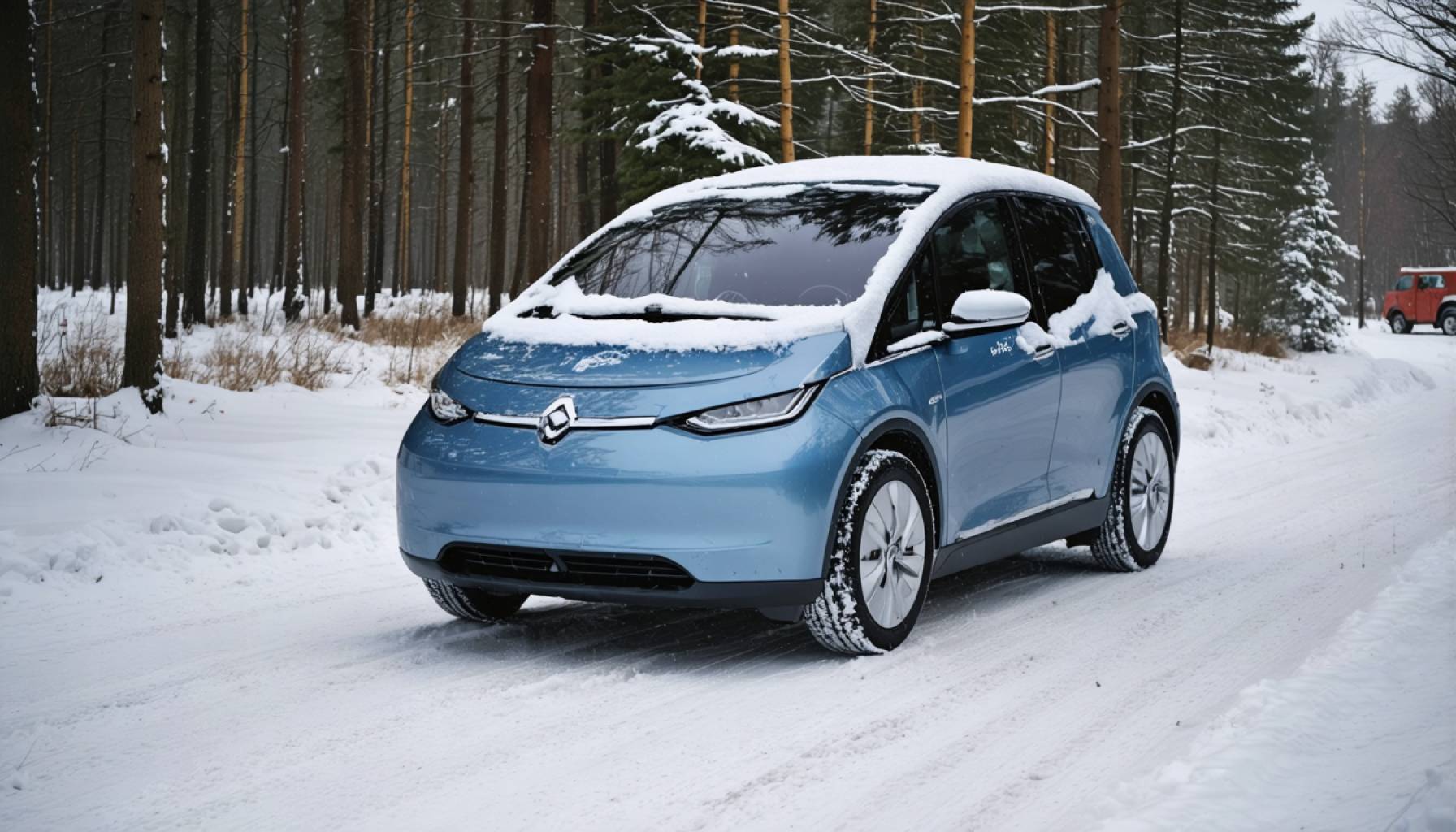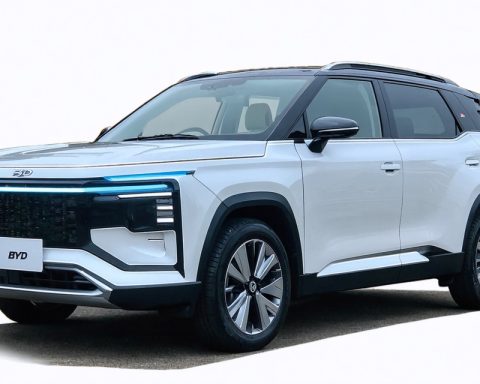- Russia is striving to boost electric vehicle (EV) adoption through government initiatives and infrastructure development.
- A new policy mandates that 5% of parking spaces in new residential developments be designated for EVs and hybrids.
- The Russian government plans to invest $105 billion by 2030 to increase EVs to 1.5 million on the roads.
- Challenges include slow infrastructure growth outside major cities, economic and geopolitical factors, and reliance on foreign parts.
- Incentives like tax breaks and subsidies aim to motivate EV purchases, but adoption is slow, with only 617 EV sales in February 2025.
- Urban areas like Moscow and Saint Petersburg are seeing some progress, but rural regions lag behind significantly.
- Despite obstacles, Russia seeks to shift towards sustainable energy, aligning slowly with global trends.
Amidst sprawling landscapes and a relentless winter chill, Russia is quietly attempting to ignite an electric vehicle revolution. The government’s recent initiatives aim to transform this vast nation into a haven for modern mobility, but the journey is fraught with challenges as daunting as Siberian winters.
The Russian Ministry of Construction is spearheading a plan to make electric vehicles (EVs) more accessible. New residential developments are now required to designate at least 5% of parking spaces for electric and hybrid vehicles, with power capabilities of at least 11 kW for charging stations. This is part of a broader national strategy to weave EVs into the fabric of everyday Russian life and cut down the nation’s carbon emissions significantly.
Despite its ambitions, Russia’s journey towards electric mobility is moving at a glacial pace. While Moscow, Saint Petersburg, and a few other urban hubs are seeing a slow uptick in EV infrastructure, vast expanses of rural Russia remain untouched by this electric wave. EV adoption faces formidable barriers in these remote regions, highlighting a significant disparity in infrastructure development.
Government incentives, including tax breaks, toll exemptions, and direct subsidies aimed at making EV purchases more attractive, strive to reclaim lost momentum. The Russian government plans to invest $105 billion by 2030 in EV infrastructure and aims to boost the number of EVs on the road to 1.5 million. Yet, the overall impact remains modest compared to more advanced markets.
Russia’s current economic and geopolitical climate casts a long shadow over its EV ambitions. Domestic automotive companies struggle with manufacturing capabilities, often relying on importing parts from China. The lingering conflict between Russia and Ukraine further complicates matters, deterring potential foreign investments in local manufacturing.
Autostat’s recent data suggests a sobering reality: February 2025 saw only 617 EV sales, a drastic drop from the previous year’s numbers. This contraction, marked by an unyielding series of declines over eight months, underscores the challenges inherent in running an electric vehicle strategy amidst harsh winter conditions, a sprawling geography, and an inconsistent industrial base.
As Russia trudges forward, the drive to electrify its auto industry mirrors a deeper aspiration to align with global shifts towards sustainable energy, albeit at its own pace. The path may be rocky and steep, but it carries with it the promise of a greener future — if the many hurdles can be overcome. In the meantime, the world watches as this nation seeks to transform its icy roads into conduits of a cleaner, electric-powered tomorrow.
Can Russia Overcome the Hurdles to Lead an Electric Vehicle Revolution?
Challenges and Realities of Russia’s Electric Vehicle Market
As Russia aspires to transition into an electric vehicle (EV) powerhouse, it faces numerous challenges that reflect both geographical and industrial complexities. Here’s a deeper dive into the factors shaping Russia’s EV landscape along with insights for navigating this terrain effectively.
Current State and Infrastructure Development
– Urban vs. Rural Disparities: Major cities like Moscow and Saint Petersburg are witnessing developments in EV infrastructure, although rural areas of Russia remain largely underserved. This unequal distribution highlights a critical challenge: integrating vast and remote regions into the national electric framework.
– Government Policies: While the government mandates new residential developments to allocate 5% of parking for EVs, implementation remains inconsistent across the country. Government incentives such as tax breaks and toll exemptions aim to stimulate EV adoption, but their effectiveness in rural or economically weaker regions is uncertain.
Economic and Geopolitical Challenges
– Dependence on Imports: Russia’s domestic automotive industry faces significant hurdles, partially due to its reliance on imported components, primarily from China. This dependence complicates self-sufficiency and innovation within the sector.
– Geopolitical Tensions: Ongoing tensions between Russia and Ukraine deter foreign investment, which is crucial for developing a robust local manufacturing base. This geopolitical environment restricts access to essential resources and financial backing needed to boost EV production.
Adoption Barriers
– Harsh Winters and Range Anxiety: Russia’s severe winters pose a unique barrier to EV adoption, as cold weather can significantly reduce battery efficiency and vehicle range. Ensuring reliable performance in extreme conditions is a technical challenge to be addressed by manufacturers.
– Economic Climate: Russia’s economic volatility contributes to uncertainties in consumer purchase behavior, affecting EV sales. Despite government investment plans of $105 billion for infrastructure, economic instability may impede these efforts.
Future Projections and Market Trends
– Market Growth Projections: By 2030, Russia aims to have 1.5 million EVs on its roads. However, achieving this goal demands a concerted effort in technology development, infrastructure expansion, and consumer education on electric mobility benefits.
– Innovation and Sustainability: For a sustainable future, Russia must innovate within its automotive sector, perhaps focusing on all-weather EV designs and investing in renewable energy sources for charging infrastructure.
Actionable Steps for the Russian EV Market
1. Expand Infrastructure Beyond Urban Areas: Focus on rolling out advanced charging networks in rural areas to bridge the urban-rural divide.
2. Enhance Local Manufacturing Capacities: Encourage collaborations and joint ventures with international EV leaders to boost domestic production capabilities.
3. Invest in Renewable Energy Integration: Link charging stations to renewable energy sources to enhance sustainability and reduce long-term operational costs.
4. Consumer Awareness Campaigns: Initiate public awareness campaigns to educate citizens about the economic and environmental advantages of EVs.
For more insights on electric vehicle trends, visit Tesla or explore developments on Nissan Global.
Conclusion
With strategic planning and international cooperation, Russia can gradually overcome the barriers to creating a thriving EV market that aligns with global sustainability goals. The advancement of EV technology in cold climates, combined with comprehensive policy support, will be critical to transforming Russia’s icy expanses into pathways for an electrified future.

















